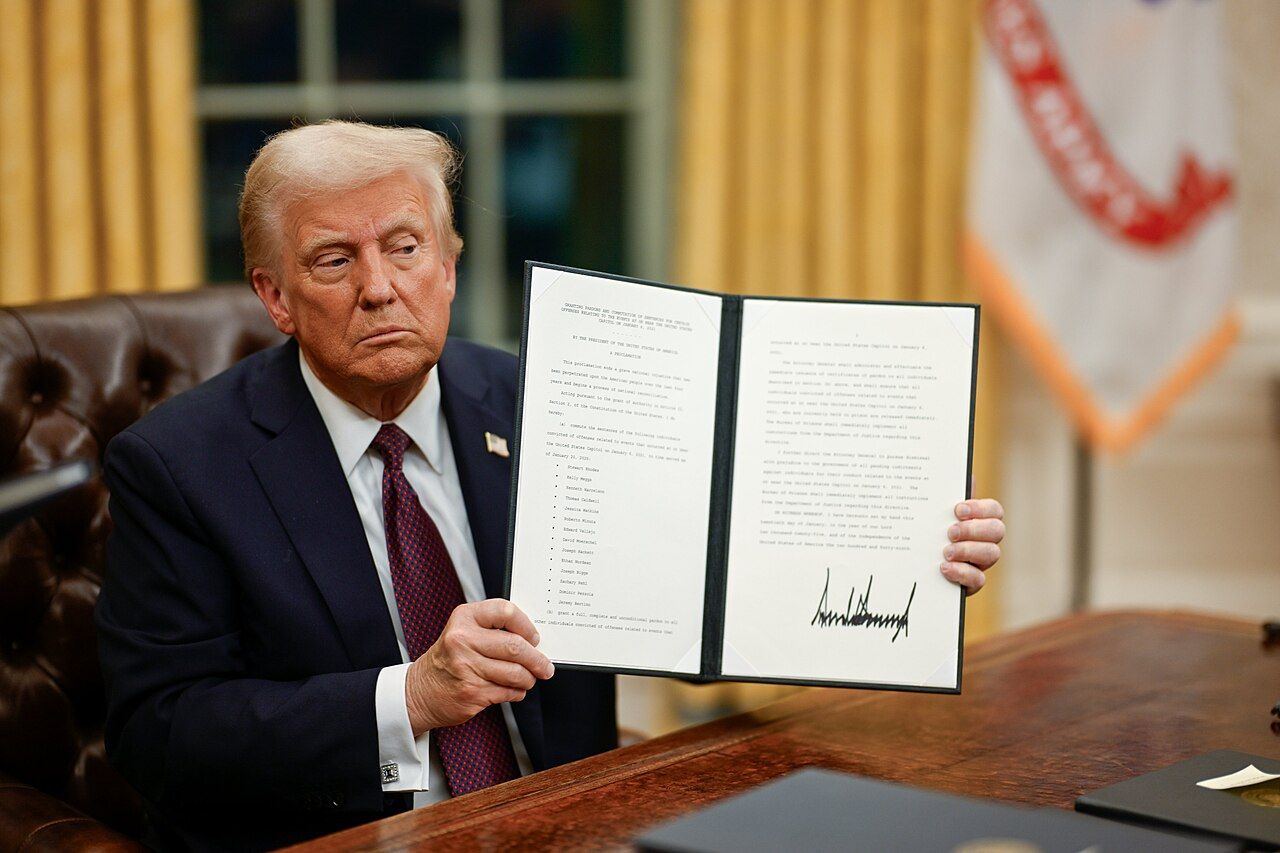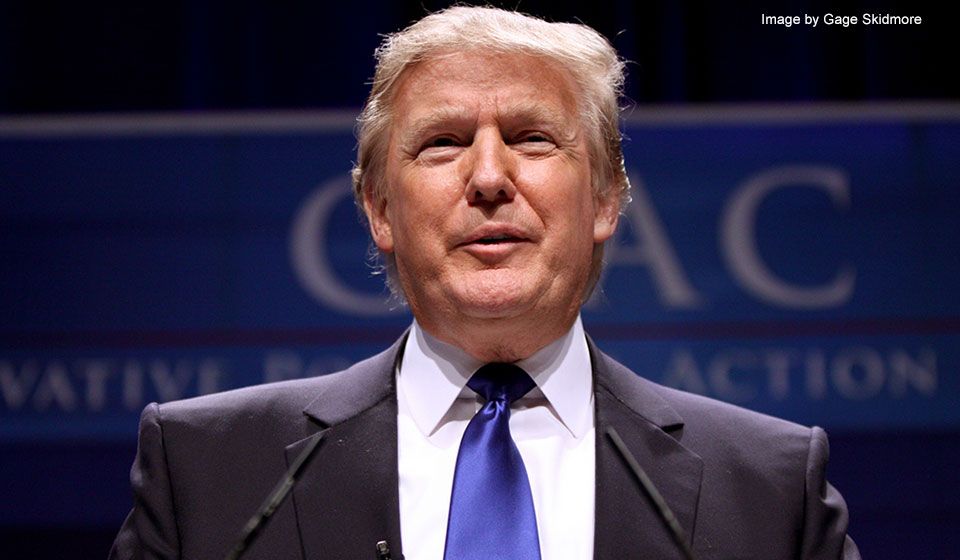
A profound shift in the perception of government data unfolded on August 1, 2025, when President Donald Trump announced the immediate firing of Erika McEntarfer, the commissioner of the Bureau of Labor Statistics. This decisive action followed the release of employment figures that showed unexpectedly slow job growth for July, coupled with significant downward revisions for prior months. The president’s justification for this dismissal was stark: an assertion that the job numbers were “phony” and that the commissioner had “faked” other job figures to aid political opponents.
This move by President Trump, made public through a Truth Social post where he stated, “I have directed my Team to fire this Biden Political Appointee, IMMEDIATELY,” quickly sent ripples across economic and political circles. He claimed McEntarfer “faked the Jobs Numbers before the Election to try and boost Kamala’s chances of Victory,” and questioned the most recent job figures as “Rigged.” The gravity of such an accusation, directed at an agency long regarded as a beacon of nonpartisan statistical integrity, immediately raised questions about the reliability of crucial economic indicators.
The Bureau of Labor Statistics, commonly known as the BLS, operates as an independently managed body within the U.S. Department of Labor. Established in 1884, its core mission revolves around collecting and disseminating vital statistical data on various economic concerns, including employment, wages, inflation, and productivity. This information forms the bedrock upon which policymakers craft economic strategies, businesses make investment decisions, and individuals gauge the health of the economy, underpinning countless financial transactions and market assessments.
The immediate catalyst for Commissioner McEntarfer’s dismissal was the BLS’s August 1st report. This release indicated that total nonfarm payroll employment had changed little in July, adding only 73,000 jobs, a notable slowdown from the 147,000 jobs added in the previous month. Furthermore, the unemployment rate stood at 4.2 percent, maintaining near-historic lows but still subject to scrutiny.

What appeared to particularly draw the president’s ire were the substantial revisions to the prior two months’ data. The BLS reported that the change in total nonfarm payroll employment for May was revised down by 125,000, from an initial +144,000 to +19,000. Similarly, June’s figures were revised down by 133,000, from +147,000 to +14,000. These combined revisions meant that employment in May and June was 258,000 lower than previously reported, a fact Trump deemed a “major mistake” and evidence of manipulation.
Yet, BLS experts and former commissioners uniformly describe such revisions not as errors or manipulations, but as a standard, integral part of the statistical process. Kathy Utgoff, who served as BLS commissioner under President George W. Bush, unequivocally stated, “Revisions are not mistakes, they are improvements.” The agency routinely revises its figures as more comprehensive data becomes available, a practice explained on its website.
The monthly job estimates are initially based on the “establishment survey,” which polls approximately 121,000 employers, covering about 30 percent of U.S. employment. This initial data collection occurs over a window of nine to fifteen days. However, as the BLS continues to gather information over the subsequent two months, more complete payroll data is collected, leading to the routine revisions of the prior two months’ figures.

Beyond these monthly adjustments, the BLS also conducts an annual “benchmarking” process. This comprehensive update adjusts a full year’s worth of figures by using state unemployment insurance tax filings from employers, which provide more exhaustive information and cover approximately 97 percent of U.S. nonfarm employment. This process, while taking longer to compile, results in more reliable and accurate long-term employment data.
William Beach, appointed BLS commissioner by Trump in 2019, corroborated the integrity of the data generation process, stating in an interview on CNN’s “State of the Union” that “By the time the commissioner sees the numbers, they’re all prepared. They’re locked into the computer system.” He further emphasized that commissioners have “no ability to change the numbers that come out of computers at the last minute,” with their role primarily limited to adjusting the wording of the press release, the goal being to “try to be boring” with that language.
Indeed, the BLS’s press releases are characteristically dry and factual. The August 1st release, for instance, simply noted “sizable revisions for the prior two months” at the bottom, explaining that these “Monthly revisions result from additional reports received from businesses and government agencies since the last published estimates and from the recalculation of seasonal factors.” This technical explanation stands in stark contrast to the president’s allegations of deliberate falsification.
President Trump’s claims about the BLS’s timing and intent also appear to contradict the factual record. He alleged that “Days before the election, she [McEntarfer] came out with these beautiful numbers for Kamala, I guess Biden/Kamala. And she came out with these beautiful numbers trying to get somebody else elected.” He then claimed that “on the 15th of November or thereabouts, they had an 8 or 900,000 overstatement, reduction. Right after the election.”

However, the actual sequence of events paints a different picture. A month before the election, on October 4, the BLS reported growth of 254,000 jobs for September. Crucially, “days before the election,” as Trump himself put it, the November 1st BLS announcement showed weak growth of only 12,000 jobs in October. This report explicitly noted that strike activity and hurricanes may have affected estimates, and that August and September figures had been revised downward by 112,000.
Far from boosting his political opponents, this report was widely characterized as “dismal” by media outlets like Fox News, which saw it as “last-minute political ammunition” for Trump to attack the Biden-Harris administration. The Trump campaign, at the time, seized upon the report, calling it “a catastrophe” that demonstrated how the administration had “broke our economy.” The notion that McEntarfer released “beautiful numbers” to help Kamala Harris just before the election is directly refuted by these facts.
Regarding Trump’s reference to an 800,000 or 900,000 reduction, he was likely alluding to a preliminary estimate announced in late August 2024—well before the election—that the number of jobs created over the 12 months ending in March 2024 would be adjusted downward by 818,000. This was part of the BLS’s normal annual “benchmarking” process. At that time, Trump also claimed this revision was a “lie” and that the “Harris/Biden administration has been caught fraudulently manipulating job statistics.”

There was, and remains, no evidence for such claims. While the 818,000 preliminary revision figure was indeed larger than the average revision over the prior decade, such substantial adjustments are not unprecedented. For instance, the annual revision for 2019, under Trump’s own administration, resulted in a reduction of 514,000 jobs. Similarly, the 2009 revision saw a reduction of 902,000 jobs. These historical precedents further underscore that revisions, even large ones, are a normal part of the BLS’s rigorous methodology, not a sign of political meddling.
President Trump’s pattern of questioning economic data extends back to his 2016 presidential campaign, where he famously declared, “Don’t believe those phony numbers,” in his New Hampshire victory speech. This consistent distrust of economic data has been a recurring feature of his public commentary, particularly when reports do not align with his desired narrative. It creates a stark contrast with his past embrace of favorable jobs reports, such as in March 2017, when his press secretary Sean Spicer stated, “They may have been phony in the past, but it’s very real now,” in reference to strong job growth under his administration.
Erika McEntarfer herself was confirmed to her post by an overwhelmingly bipartisan Senate vote of 86-8 on January 11, 2024. Among those who voted to approve her were now Vice President JD Vance and Secretary of State Marco Rubio, illustrating her broad acceptance across the political spectrum just months before her firing. Her extensive career, spanning over 20 years in the federal government as an economist, included service under presidents of both parties, including Mr. Trump himself, further underscoring the nonpartisan nature of her professional background.
Read more about: H-E-B’s Strategic Investment: Expanding Curbside Convenience and Redefining the Texas Grocery Experience

The decision to remove Commissioner McEntarfer sparked immediate and widespread condemnation from a diverse array of economists, former government officials, and nonpartisan groups. William Beach, her predecessor appointed by Trump, called the firing “totally groundless” and “damaging,” asserting it “sets a dangerous precedent and undermines the statistical mission of the Bureau.” He, along with Erica Groshen, a former BLS commissioner under President Barack Obama, and other experts forming the Friends of the Bureau of Labor Statistics, issued a joint statement. They unequivocally stated that Trump’s claim was “baseless” and “undermines the credibility of federal economic statistics that are a cornerstone of intelligent economic decision-making by businesses, families, and policymakers.”
These experts, representing a broad ideological spectrum, consistently stressed the BLS’s commitment to independence and accuracy. David Wilcox, a senior fellow at the Peterson Institute for International Economics and director of U.S. economic research at Bloomberg Economics, emphasized that the “rank and file of the BLS and the other statistical agencies are deeply imbued with the importance of independence.” He elaborated that they “understand to their core the importance of delivering the best possible estimates, even if and when the message is inconvenient for the president and his team.”
The U.S. statistical agencies, particularly the BLS, are widely considered the “gold standard globally,” as highlighted by Tara Sinclair, a George Washington University economist. This reputation is built on decades of rigorous, state-of-the-art statistical practices. Undermining this credibility, as many critics argue Trump’s actions do, has far-reaching consequences. Martha Gimbel, the executive director of the Budget Lab at Yale, concisely articulated this concern: “If you want people to stop trusting the numbers coming out of the Bureau of Labor Statistics, firing the person who is confirmed by the Senate to make sure those numbers are trustworthy is a real good way to do it.”

The broader implications of such an act are indeed chilling. Economic data, meticulously collected and analyzed by agencies like the BLS, serves as the critical compass guiding national and international financial markets, investment strategies, and public policy. Presidential approval ratings often fluctuate based on these key measurements, and countless private and public transactions, from consumer price index adjustments to stock market holdings, are directly tied to their accuracy. Erosion of confidence in these figures would inject profound uncertainty into the economy, making informed decision-making exponentially more difficult for everyone.
Beyond immediate economic impacts, the firing raises significant concerns about the independence of other federal statistical agencies and the broader integrity of government data and science. If political pressure can so easily lead to the dismissal of a nonpartisan official for delivering inconvenient truths, it sets a perilous precedent. This vulnerability to political interference could lead to a chilling effect, where agencies might feel compelled to self-censor or manipulate data to avoid similar reprisals.
The Trump administration’s 2026 budget proposal, which includes an aim to reduce funding to the BLS by 8 percent and to reorganize the BLS, the Census Bureau, and the Bureau of Economic Analysis into a single statistical agency at the Department of Commerce, further compounds these anxieties. Experts like David Wilcox have explicitly warned that to reduce the odds of large revisions and maintain data quality, there is a need “to be investing in the capabilities of the statistical agencies rather than proposing an 8% cut in the BLS’s budget.”
A weakened and compromised statistical system, resulting from budget cuts, staff attrition due to hiring freezes, and direct political interference, would inevitably lead to less reliable data. The BLS already reported in June that it was reducing its collection of data on consumer prices due to resource constraints. Such reductions, economists warn, could over time erode the reliability of inflation data, which Federal Reserve policymakers rely on for interest rate decisions and which influences critical agreements like union contracts and Social Security benefits. Federal Reserve Chair Jerome H. Powell underscored the importance of this, stating, “The government data is really the gold standard in data. We need it to be good and to be able to rely on it.”
Read more about: Echoes of Silence: Why Country Music’s Controversies Can’t Be Explored Here

President Trump’s repeated assertions of “rigged” or “phony” data, delivered without any supporting evidence, are not merely political rhetoric; they represent a fundamental challenge to the very foundation of objective, nonpartisan facts in public discourse. The BLS, by its design and its decades of operation, is structured precisely to prevent political manipulation, with multiple layers of career professionals ensuring data integrity. The fact that Trump’s own appointees and long-serving economists from across the political spectrum have vociferously defended the BLS commissioner and the agency’s processes speaks volumes.
The act of firing a Senate-confirmed official tasked with upholding statistical purity, particularly without any substantiation for the claims of falsification, signals a dangerous escalation in the broader effort to control narratives by discrediting inconvenient facts. It could ultimately backfire, not by altering the underlying economic realities, but by eroding the public’s and critical institutions’ confidence in the very data needed to understand and respond to those realities. The gold standard of U.S. statistics, a cornerstone of intelligent decision-making, stands vulnerable, its credibility now subject to unprecedented political attack.
This assault on statistical integrity, if unchallenged, risks leaving policymakers, businesses, and citizens navigating a complex economic landscape with an increasingly unreliable map. The implications extend far beyond the immediate political skirmish, threatening to destabilize the very mechanisms by which a modern, data-driven society understands itself and plans its future. The coming months will reveal the true measure of resilience for these vital, independent institutions, and whether the steadfast commitment of their professionals can withstand the profound pressures now being exerted upon them.



